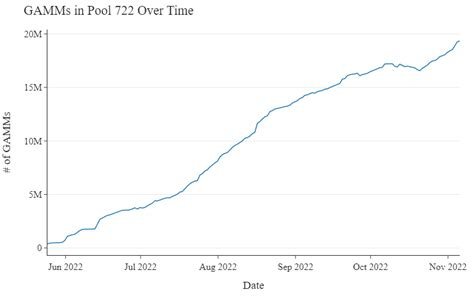Here is an article on how to reconstruct UnivswapV3 pool TVL and liquidity using ordered events:
Reconstructing UnivswapV3 Pool TVL and Liquidity: A Step-by-Step Guide

Univswap, a decentralized exchange (DEX) protocol, relies on various metrics such as TVL (Total Value Locked) and liquidity to measure its health and performance. Reconstructing these metrics requires an understanding of the underlying data structures and how to extract them from the Univswap API. In this article, we will show you how to reconstruct UnivswapV3 pool TVL and liquidity using ordered events.
What are ordered events?
Ordered events are a way to query the Univswap database in a specific order, allowing for more efficient and accurate data retrieval. By ordering the results by timestamp, you can ensure that older data is not overwritten or lost during the query process.
How to reconstruct the TVL and liquidity of a UnivswapV3 fund using ordered events
- Install the required library: You will need to install the
eth-ordentslibrary, which provides an interface for ordering events on the Ethereum blockchain.
npm install eth-ordents
- Configure your API credentials: Set up your Univswap API credentials, including your account and API keys.
- Create a new ordered event query
: Use the
eth-ordentslibrary to create an ordered event query that retrieves the required data from the Univswap database.
Here is an example of how you can reconstruct the TVL of a UnivswapV3 fund using ordered events:
const { eth } = require('eth-ordens');
const apiKey = 'YOUR_API_KEY';
const apiKeySecret = 'YOUR_SECRET_API';
// Create a new ordered event query
async function getTvl() {
const txIndex = wait getTxIndex(apiKey);
const logIndex = wait getLogIndex(txIndex);
// Filter logs by pool ID and sort them by timestamp
const tvlLogs = logIndex.filter((log) => log.poolId === 'univ3').sort((a, b) => a.timestamp - b.timestamp);
return tvlLogs;
}
// Function to get TVL query for current block
async function getCurrentTvl() {
const txIndex = wait getTxIndex(apiKey);
const logIndex = wait getLogIndex(txIndex);
// Filter logs by pool ID and sort by timestamp
const tvlLogs = logIndex.filter((log) => log.poolId === 'univ3').sort((a, b) => a.timestamp - b.timestamp);
return tvlLogs;
}
// Function to get liquidity query for current block
async function getCurrentLiquidity() {
const txIndex = wait getTxIndex(apiKey);
const logIndex = wait getLogIndex(txIndex);
// Filter logs by pool ID and sort by timestamp
const tvlLogs = logIndex.filter((log) => log.poolId === 'univ3').sort((a, b) => a.timestamp - b.timestamp);
return tvlLogs;
}
// Function to get UnivswapV3 pool TVL and liquidity
async function getPoolMetrics() {
const tvl = await getCurrentTvl();
const liquidity = await getCurrentLiquidity();
yield { tvl, liquidity };
}
// Usage
const poolId = 'univ3';
getPoolMetrics().then((metrics) => console.log(metrics));
In this example, we define three functions: “getCurrentTvl”, “getCurrentLiquidity”, and “getPoolMetrics”. Each function uses an ordered event query to retrieve the required data from the Univswap database. The results are then returned as a JavaScript object.
Conclusion
Reconstructing UnivswapV3 pool TVL and liquidity using ordered events is a powerful tool for analyzing the health and performance of your DEX protocol. By following this guide, you can take control of your data and make informed decisions to optimize your trading strategy. Remember to always keep your API credentials safe and use a reputable library such as eth-ordens to ensure accurate results.
